If you had to choose the most iconic residents of a coral reef, angelfish would make the top of the list. With eye-catching colors and graceful movements, they’re a favorite among scuba divers and photographers alike. But how much do you know about these beautiful creatures? Let’s take a look at some angelfish facts.
Here are some basic facts to get you started:
Family name: Pomacanthidae, which includes over 80 different species Size: Can range from about 8 cm (3 inches) for some species of pygmy angelfish to 60 cm (24 inches) for the Gray Angelfish Habitat: Found in shallow tropical reefs in the Atlantic, Indian, and Pacific oceans Shape: Their brightly colored bodies are flat and laterally compressed, making them excellent swimmers who can easily maneuver around coral reefs Lifespan: Can live up to 10 – 20 yearsThese are just some generic characteristics of the angelfish family, but did you know these seven fun facts about them?
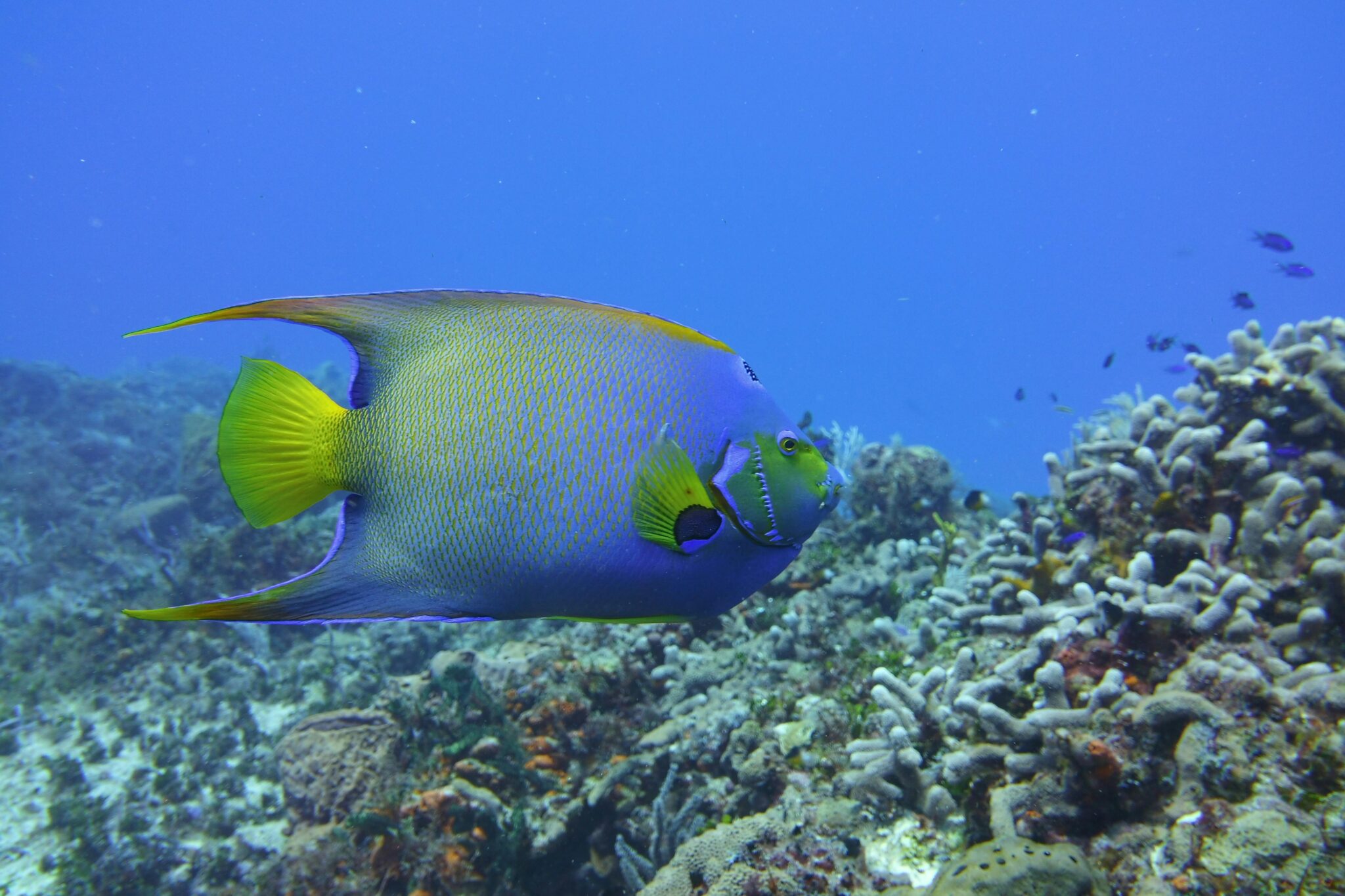
As with many other fish species, juvenile angelfish can look wildly different from their adult counterparts. They may be a completely different color and shape. But the transformation that the Emperor Angelfish goes through is so extreme that the juveniles were previously thought to be a completely different species.
This beautiful fish starts off with a navy blue body with large white stripes. As it grows the stripes morph into an intricate pattern of electric blue and white concentric markings. Then, as a young adult, it starts acquiring some yellow, the circular markings change into stripes, and it develops the characteristic black eye mask that makes the adult Emperor look a little like the Zorro.
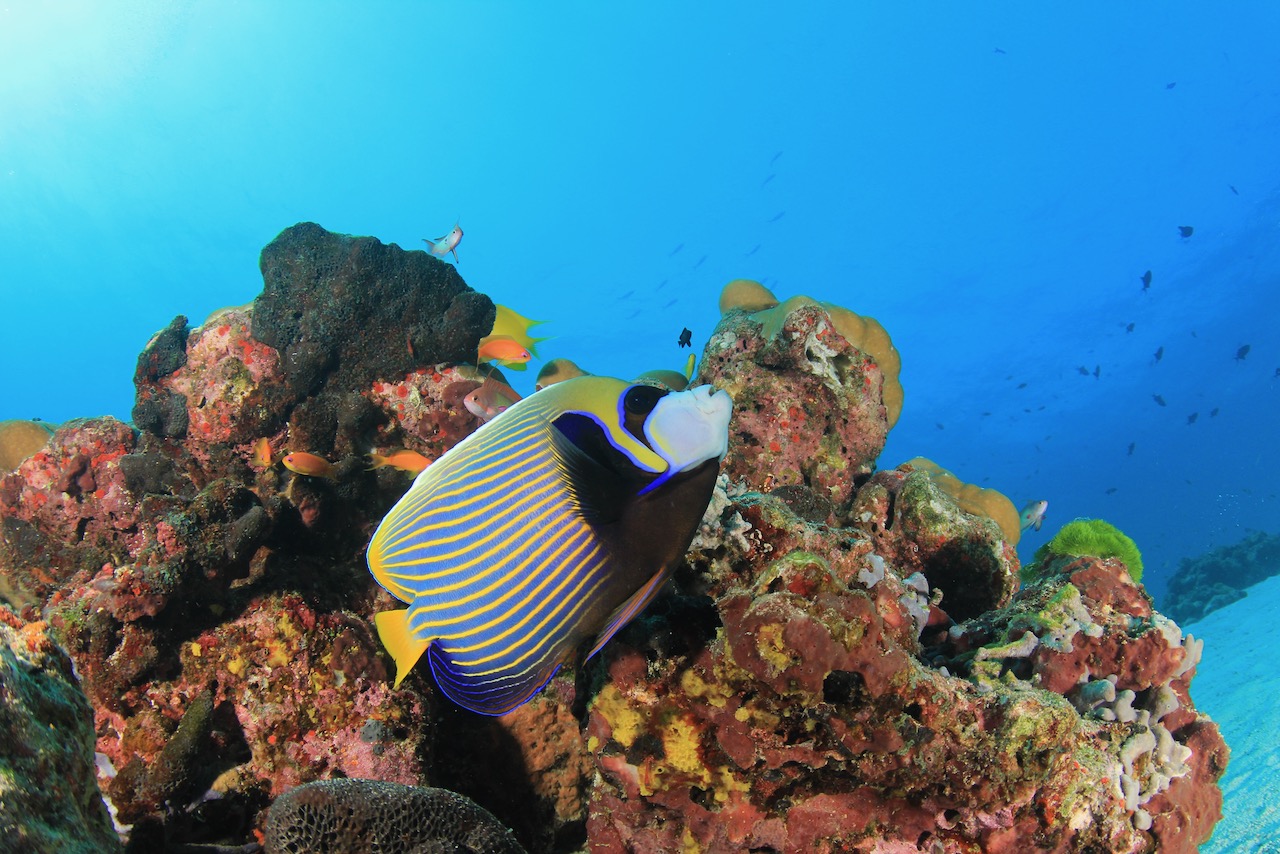
At least in the textbooks! Until as recently as the 1970s, scientists considered angelfish to be slightly bigger members of the butterflyfish family. However, today, we know they’re a completely separate family. Angelfish typically have extended real dorsal and anal fins, whereas butterflyfish don’t. Still, the best way to tell them apart is by the sharp spine or preopercle that angelfish have on their gill cover.
French Angelfish and Gray Angelfish are monogamous, and marine biologists believe that they mate for life. They establish territories to defend their mate from the competition, and that’s why divers often see them swimming in pairs around the reef. In contrast, other species, like the Queen Angelfish and Blue Angelfish, are polygamous, and you can often find one male with a harem of females.
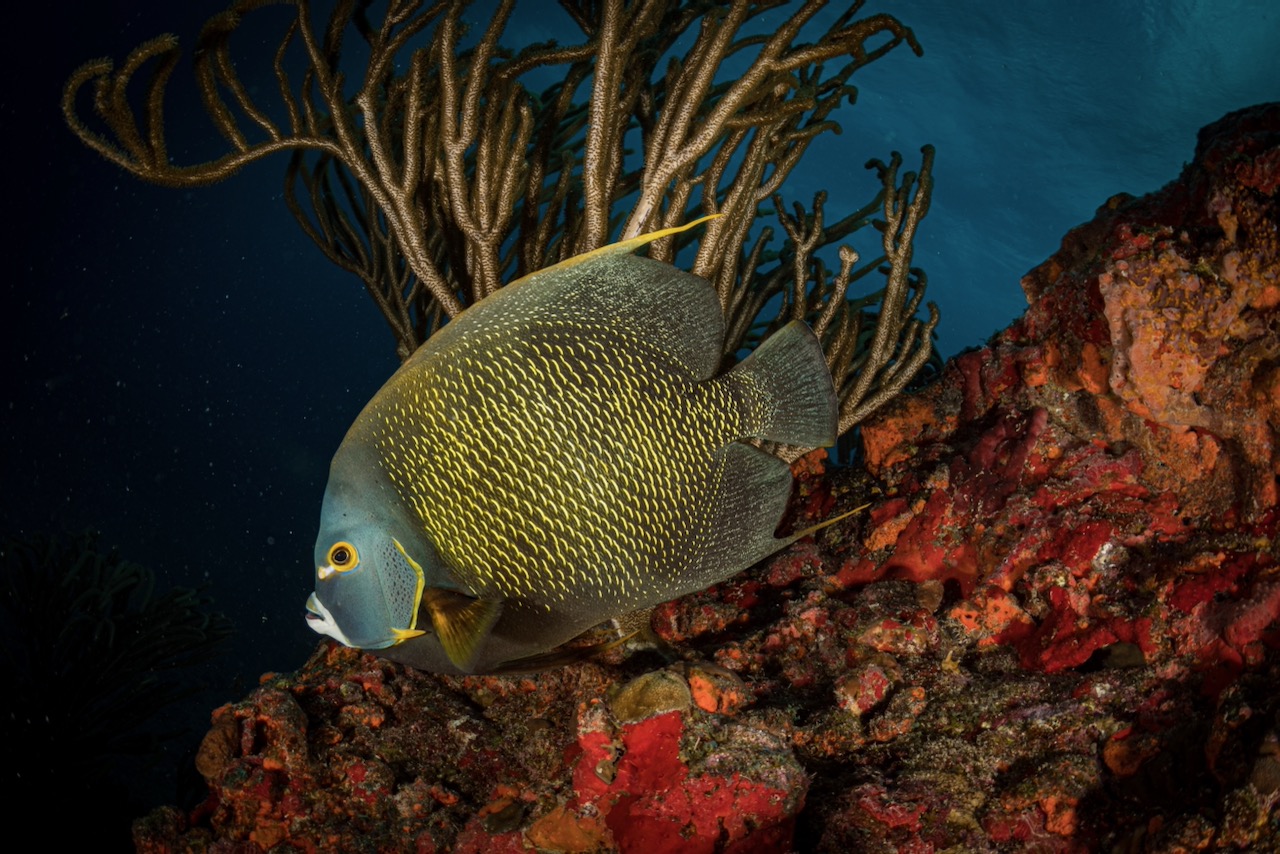
There’s a lot that we still don’t know about angelfish mating, but many species have been observed to be protogynous hermaphrodites. This means that they all start their lives as females. Then later on, when the dominant male disappears from the harem, the largest female changes sex and becomes a male.
These slow-moving, placid creatures that spend their life swimming carefree among the coral would seem to be ideal prey for fast-moving predators. However, adult angelfish have very few natural predators in the ocean. Their thin, round bodies may be tricky for predators to get a hold of, and their shape helps them maneuver in and out of small crevices in the reef.
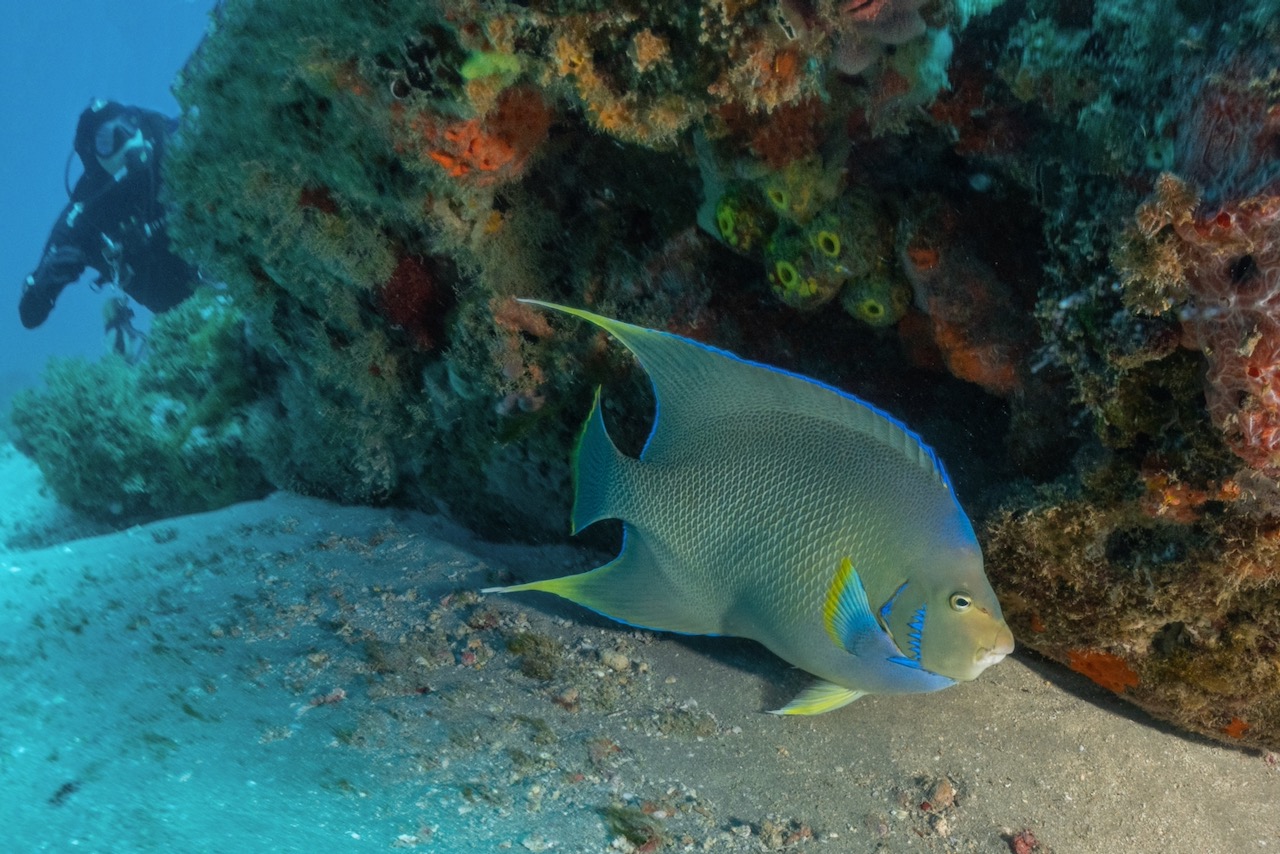
You may think that life in the reef is all fun and games, but some species of angelfish have very important jobs to do to ensure the reef ecosystem functions properly. For example, French and Gray Angelfish juveniles are spa workers. They work in cleaning stations to clean parasites and dead scales from larger fish in the reef, keeping them healthy. All angelfish also have a vital job as coral gardeners, eating algae to keep it at bay so it doesn’t suffocate the coral, which is essential for the health of the entire reef.
Help with Coral Reef Conservation
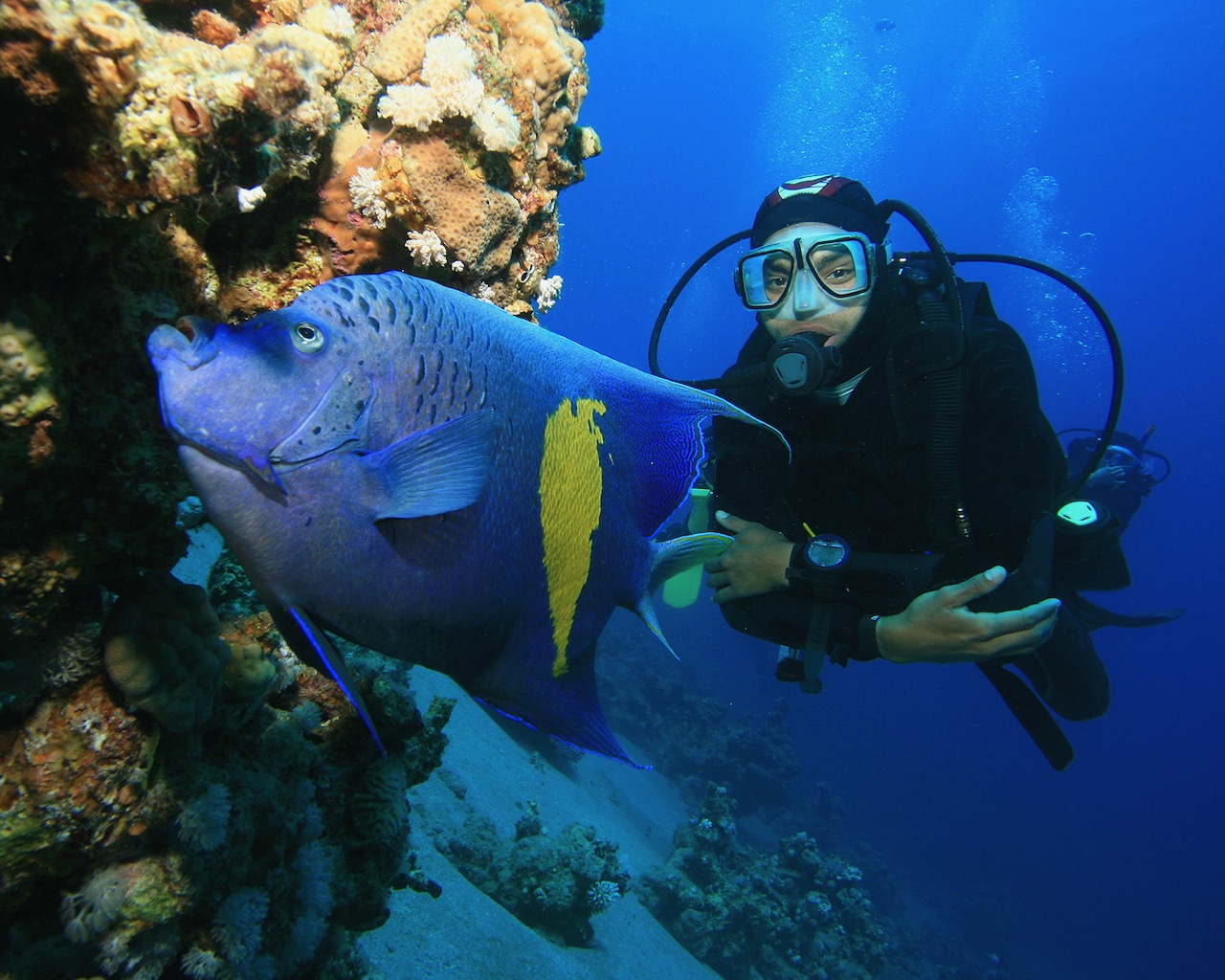
Well, not anything. However, they are omnivorous and have very varied diets, depending on the species. All angelfish eat algae; they spend much of their time foraging for this nutritious but tricky-to-gather food.
Some eat sponges, using their strong protracting jaws with rows of tightly packed teeth to cut through their hard exterior. Sponges have tough spicules- microscopic crystalline spines that radiate outwards, giving the sponges their shape and rigidity- so the angelfish secrete mucus as they eat to protect their stomach from the sharp edges.
They’re also known to eat gorgonian polyps and other invertebrates, such as zoanthids, tunicates, and hydroids. All in all, it is a highly varied and nutritious diet!
Whether you’re a scuba diver, freediver, underwater photographer, or simply an ocean enthusiast, it’s hard not to be captivated by the beauty of angelfish when you see them. They’re among the most fascinating ocean dwellers, with their vibrant colors, striking patterns, and graceful movements.
Like all reef inhabitants, their survival depends on the health and protection of coral reefs, and they’re threatened by loss of habitat, harmful fishing practices, and plastic pollution. As ocean advocates, the more we know about these magnificent creatures, the more we can do to protect them and their homes.

With the PADI Fish Identification Specialty course, you’ll learn how to identify different fish species, as well as learning about PADI AWARE® activities that help protect them. The next time you see an angelfish while diving, you’ll be able to appreciate these beauties and the crucial role they play in maintaining a healthy reef ecosystem.
Start Your Fish ID Specialty Course
Share This